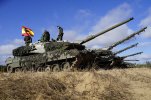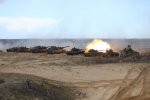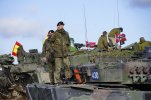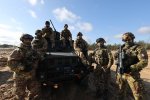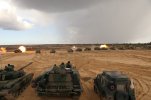Install the app
How to install the app on iOS
Follow along with the video below to see how to install our site as a web app on your home screen.
Note: This feature may not be available in some browsers.
You are using an out of date browser. It may not display this or other websites correctly.
You should upgrade or use an alternative browser.
You should upgrade or use an alternative browser.
Panssarivaunut
- Viestiketjun aloittaja ctg
- Aloitus PVM
-
- Tagit
- panssarivaunut
tulikomento
Supreme Leader
T72sia? Onko nuo neuvostoliiton perintöä?
On ainakin puolalaisilla käytössä vaikka heilläkin päävaunutyyppi tietääkseni on jo Leo 2.
PT-91 Twardy - Wikipedia
Huhta
Greatest Leader
Mulla huomio kiintyy tuohon alimman kuvan tajuttoman kokoiseen savuheittimeen. Panssarointi silti näyttää olevan normi. Ei mitään modifikaatiota. Pelastaako savut sen loppupelissä?
Ei se ole tajuttoman kokoinen. Näyttää vain siltä, kun vaunu on pieni.
The PT-91 has a thermosmoke device generating smoke screens from fuel and 24 grenade launchers fitted with smoke, anti-personnel frag or tear gas grenades developed specifically to provide a non-lethal protection against football hooliganism.
PT-91 Twardy - Wikipedia
Leopard 2A4:ssä on 16 kranaatinlaukaisinta, 8 kummallakin puolella tornia.
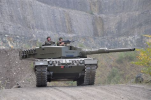

Ja onhan PT-91:ssä ERA-tilliä lisäämässä suojaa. Alla parempi kuva etusektorista.
Leopard 2A4:ssä on 16 kranaatinlaukaisinta, 8 kummallakin puolella tornia.
Järkevämmin sijoitettuna kuin tuo vanha, äijän kokoinen värkki.
Huhta
Greatest Leader
Järkevämmin sijoitettuna kuin tuo vanha, äijän kokoinen värkki.
Esteettiseksi sitä ei tietenkään voi kehua. PT-91:ssä se ei kuitenkaan työnny sivusuunnassa yli rungon leveyden, kun torni on suorassa. Tornin taakse sitä taas ei voi sijoittaa, koska siellä on varustelaatikot ja koska sitten luukusta ulkona oleva ampuja ja johtaja ovat tiellä.
Tietysti voi ajatella, että tuohon tornin kylkeenkin olisi tuotu ERA-tiilet ja asennettu heittimet jollakin virityksellä tornin etuosaan ERA-tiilien eteen. Mutta ERA-tiilen edessä heitin tuhoutuu varmasti ERA-tiilen kukkuessa, joten nykyinen paikka vaikuttaa ihan kelvolliselta kompromissilta.
Tietysti voi ajatella, että tuohon tornin kylkeenkin olisi tuotu ERA-tiilet ja asennettu heittimet jollakin virityksellä tornin etuosaan ERA-tiilien eteen. Mutta ERA-tiilen edessä heitin tuhoutuu varmasti ERA-tiilen kukkuessa, joten nykyinen paikka vaikuttaa ihan kelvolliselta kompromissilta.
Uskoakseni sen ERA tiilen kukkumisella ei ole mitään tekemistä sen heittimen tuhoutumisen kanssa. Siitä ERA laatasta kun ei lähde mitään mikä rikkoisi sen heittimen (se kun olisi vaaraksi jalkaväelle), mutta se ammus mikä sen ERA laatan laittaa kukkumaan toki rikkoo sen heittimen.
Mutta sanokaapa mikä merkitys sillä on, kun noiden suojasavujen yhteydessä yleensä näkyy maininta että noihin olisi saatavilla myös "anti-personel" ammus? Miten niitä on tarkoitus käyttää? Onko ne lähirynnäkköjä (kasapanoksilla) vastaan, vai lyhyen kantaman PST-aseita vastaan, vai onko tarkoitus ajaa lähelle vihollista ja pudottaa ne ammukset vihollisen niskaan ilman tarvetta jalkauttaa kyydissä olevia (tankeissa nyt ketään ole kyydissä, paitsi ehkä Israelissa)?
Myös, olisiko mitään järkeä/tarvetta virittää esim. 40 millinen KrKK kiinteästi ampumaan putken suuntaisesti (tai miksi ei rungon suuntaisesti) ja ladata se kranaateilla jotka on asetettu räjähtämään 200 metrin lentomatkan päässä? Tarkoitus olisi siis, että hyökkäyksessä PSV voisi painella täyttä vauhtia eteen ja tarvittaessa ampua ilmaräjähtäviä kranaatteja suunnilleen sille alueelle missä vihollisen sinkosimo voisi olla väijymässä. Ja nyt kun tätä ajattelen, niin tämä viritys olisi selkeästi runkoon kiinnitettävä, eikä putken suuntaisesti ampuva. Käyttäjä olisi kuski. Ja vielä kun lisää ajattelen, niin tämä ei olisikaan kiinteästi suunnattu, vaan kuskin kypärän VR näytön avulla suunnattava RWS (jos tämä olisi tosiaankin suunnattavissa ja ammuttavissa suuremmin kuskin tehtäviä häiritsemättä, niin sitten sen ei tarvitsisi olla KrKK, vaan mikä tahansa KK riittäisi).
Myös, olisiko mitään järkeä/tarvetta virittää esim. 40 millinen KrKK kiinteästi ampumaan putken suuntaisesti (tai miksi ei rungon suuntaisesti) ja ladata se kranaateilla jotka on asetettu räjähtämään 200 metrin lentomatkan päässä?
Henkilökohtaisesti tykkäisin jos muut aseet kuin pääase olisi modulaarisia. Tuolla parhaan kombinaation hakeminen olisi mahdollista toteuttaa ja se auttaisi paljon tulevaisuuden näkymissä jos tiettyjä moduleita voisi päivittää ja silti käyttää samassa runkossa. Pääaseen vaihto voisi tapahtua tornia vaihtamalla, tosin se ratkaisisi ammusten varastointi ongelmaa.
KrKKsta Itkon tilalle puhuin miehistönkuljetus ketjussa. Joten itse kannatan ideaa.
Viimeksi muokattu:
kimmo.j
Greatest Leader
KrKK vaunussa ei ole mielestäni täysin poissuljettu ajatus, mutta laittaisin sen itkon tilalle. Puoleet joukkueen vaunuista olisi varustettu itkolla ja puolet KrKK:lla. Mielummin siinä RWS:ssä.Uskoakseni sen ERA tiilen kukkumisella ei ole mitään tekemistä sen heittimen tuhoutumisen kanssa. Siitä ERA laatasta kun ei lähde mitään mikä rikkoisi sen heittimen (se kun olisi vaaraksi jalkaväelle), mutta se ammus mikä sen ERA laatan laittaa kukkumaan toki rikkoo sen heittimen.
Mutta sanokaapa mikä merkitys sillä on, kun noiden suojasavujen yhteydessä yleensä näkyy maininta että noihin olisi saatavilla myös "anti-personel" ammus? Miten niitä on tarkoitus käyttää? Onko ne lähirynnäkköjä (kasapanoksilla) vastaan, vai lyhyen kantaman PST-aseita vastaan, vai onko tarkoitus ajaa lähelle vihollista ja pudottaa ne ammukset vihollisen niskaan ilman tarvetta jalkauttaa kyydissä olevia (tankeissa nyt ketään ole kyydissä, paitsi ehkä Israelissa)?
Myös, olisiko mitään järkeä/tarvetta virittää esim. 40 millinen KrKK kiinteästi ampumaan putken suuntaisesti (tai miksi ei rungon suuntaisesti) ja ladata se kranaateilla jotka on asetettu räjähtämään 200 metrin lentomatkan päässä? Tarkoitus olisi siis, että hyökkäyksessä PSV voisi painella täyttä vauhtia eteen ja tarvittaessa ampua ilmaräjähtäviä kranaatteja suunnilleen sille alueelle missä vihollisen sinkosimo voisi olla väijymässä. Ja nyt kun tätä ajattelen, niin tämä viritys olisi selkeästi runkoon kiinnitettävä, eikä putken suuntaisesti ampuva. Käyttäjä olisi kuski. Ja vielä kun lisää ajattelen, niin tämä ei olisikaan kiinteästi suunnattu, vaan kuskin kypärän VR näytön avulla suunnattava RWS (jos tämä olisi tosiaankin suunnattavissa ja ammuttavissa suuremmin kuskin tehtäviä häiritsemättä, niin sitten sen ei tarvitsisi olla KrKK, vaan mikä tahansa KK riittäisi).
Runkoaseet eivät ole tehokkaita, T-55:ssa oli kuljettajan käyttämä kiinteä runko-kk ja sillä ei osunut edes siihen kuuluisaan latoon. Ase kulki mukana vara-aseena. KrKK on lisäksi sen verran iso, ettei sitä saa helposti tykin viereen.
Kuskilla on täysi työ ajaa vaunua järkevää reittiä ja meidän peitteisessä maastossa tämä vielä korostuu.
ERAn ulommasta levystä käytetään ainakin yhdessä paikassa nimitystä "flyer plate".Uskoakseni sen ERA tiilen kukkumisella ei ole mitään tekemistä sen heittimen tuhoutumisen kanssa. Siitä ERA laatasta kun ei lähde mitään mikä rikkoisi sen heittimen (se kun olisi vaaraksi jalkaväelle), mutta se ammus mikä sen ERA laatan laittaa kukkumaan toki rikkoo sen heittimen.
ERA isn’t without its drawbacks, however. First, if a box successfully prevents a penetration, that area of the tank is now vulnerable to a second hit. Also, the blast of the tile can be quite hazardous to any nearby friendly exposed personnel, as the outer steel sheet is transformed into shrapnel.
Explosive Reactive Armor
Shaped charges pose a dangerous threat to armor on the battlefield. They are very lightweight, are not dependent on their velocity upon impact for penetration, and are cheap and easy to manufacture. Typically a shaped charge has a penetration six times its diameter. Thus the 66mm M72A2 LAW...
blog.xbradtc.com
ERAn ulommasta levystä käytetään ainakin yhdessä paikassa nimitystä "flyer plate".
Explosive Reactive Armor
Shaped charges pose a dangerous threat to armor on the battlefield. They are very lightweight, are not dependent on their velocity upon impact for penetration, and are cheap and easy to manufacture. Typically a shaped charge has a penetration six times its diameter. Thus the 66mm M72A2 LAW...blog.xbradtc.com
Olen tietoinen tuosta, mutta olen melkoisen varma, että olen nähnyt mainintoja ryssien ERA malleista ja ainakin jossakin oli maininta siitä että moduuli olisi suunniteltu niin että räjähtäneenäkin moduuli jäisi paikalleen ja toimisi lisäpanssarina.
EDIT: Nyt muuten pitää mainita, että aikaisempi kommenttini on saattanut johtua väärästä mileikuvasta. Olen mahdollisesti ajatellut niitä tiettyjä BOFORS esittelyvideoita joissa on esitelty erinäisiä aseita ja panoksia ERA panssaria vastaan. Niissä näet mainitettiin sitä, että tandem taistelukärjen se ensimmäinen ei ole tarkoitettu laukaisemaan laattaa, vaan tekemään reikä ERA panssarin räjähteeseen. Tästä saattoi johtua muistikuva että ERA tiili jäisi ehjäksi. Mutta joka tapauksessa voitanee sanoa, että se ERA moduulin räjähtäminen tuskin vaikuttaa paljoakaan savuheittimien selviämiseen, koska ohjus tms. tekee sen ensin.
Viimeksi muokattu:
tulikomento
Supreme Leader
Miksi muuten britit alkujaankin hylkäsivät Leopard 2:n ? Varmasti kyllä testasivat vaunua, mutta päätyivät omaan Challengeriin. Kotimaisen sotateollisuuden tukemista ja kauppapolitiikkaa yhdistettynä kansallisylpeyteen ?
Älä viitti jakaa näitä, jos et jaksa kommentoida sisältöä, kiitos etukäteen.
J0h1F
Respected Leader
Challengerillahan olisi kyllä päivityspotentiaalia leveämmän runkonsa ansiosta enemmänkin, kuten se Rheinmetallin 130 mm kanuunan asentaminen osoitti. Se olisi ollut brittien panssarijoukoille merkittävä etu muihin verrattuna, jos olisi tullut valituksi. Toki emmehän tiedä, mitä kaikkia mahdollisia ongelmia siinä prototyypissä oli.
kimmo.j
Greatest Leader
Varmasti juuri näitä. Lisäksi britit onnistuivat aikaisemmin myymään vaunujaan pitkin maailmaa. Challengerin ajateltiin varmasti jatkavan tätä vienti kauppojen perinnettä. Kaupallisille ajatuksille oli siis perusteensa. Toisin kuitenkin kävi.Miksi muuten britit alkujaankin hylkäsivät Leopard 2:n ? Varmasti kyllä testasivat vaunua, mutta päätyivät omaan Challengeriin. Kotimaisen sotateollisuuden tukemista ja kauppapolitiikkaa yhdistettynä kansallisylpeyteen ?
Ehkä siinä aluksi oli ajatus. Mutta pian mm. rihlattu tykki vs. Leon ja Abramsin sileä alkoi näyttää oudolta. Nykyisillä luvuilla erityisesti mietityttää mitä järkeä on puuhailla noin pieni määrä versiota tankista, jota ei kukaan voi enää ostaa. Olisi voinut ostaa jatkokelpoisen Leon.
Eli pidätteleekö edelleen se ajatus, että olisi joku projekti johon hypätä UK-työnjaon nimissä? Se on minusta höperöä noilla brittien tulevaisuuden tankkilauttojen koolla.
Eli pidätteleekö edelleen se ajatus, että olisi joku projekti johon hypätä UK-työnjaon nimissä? Se on minusta höperöä noilla brittien tulevaisuuden tankkilauttojen koolla.
Huhta
Greatest Leader
Miksi muuten britit alkujaankin hylkäsivät Leopard 2:n ? Varmasti kyllä testasivat vaunua, mutta päätyivät omaan Challengeriin. Kotimaisen sotateollisuuden tukemista ja kauppapolitiikkaa yhdistettynä kansallisylpeyteen ?
Evl. evp. Stuart Crawford on oikea mies vastaamaan kysymykseesi, kun oli mukana hankintaprosessissa.
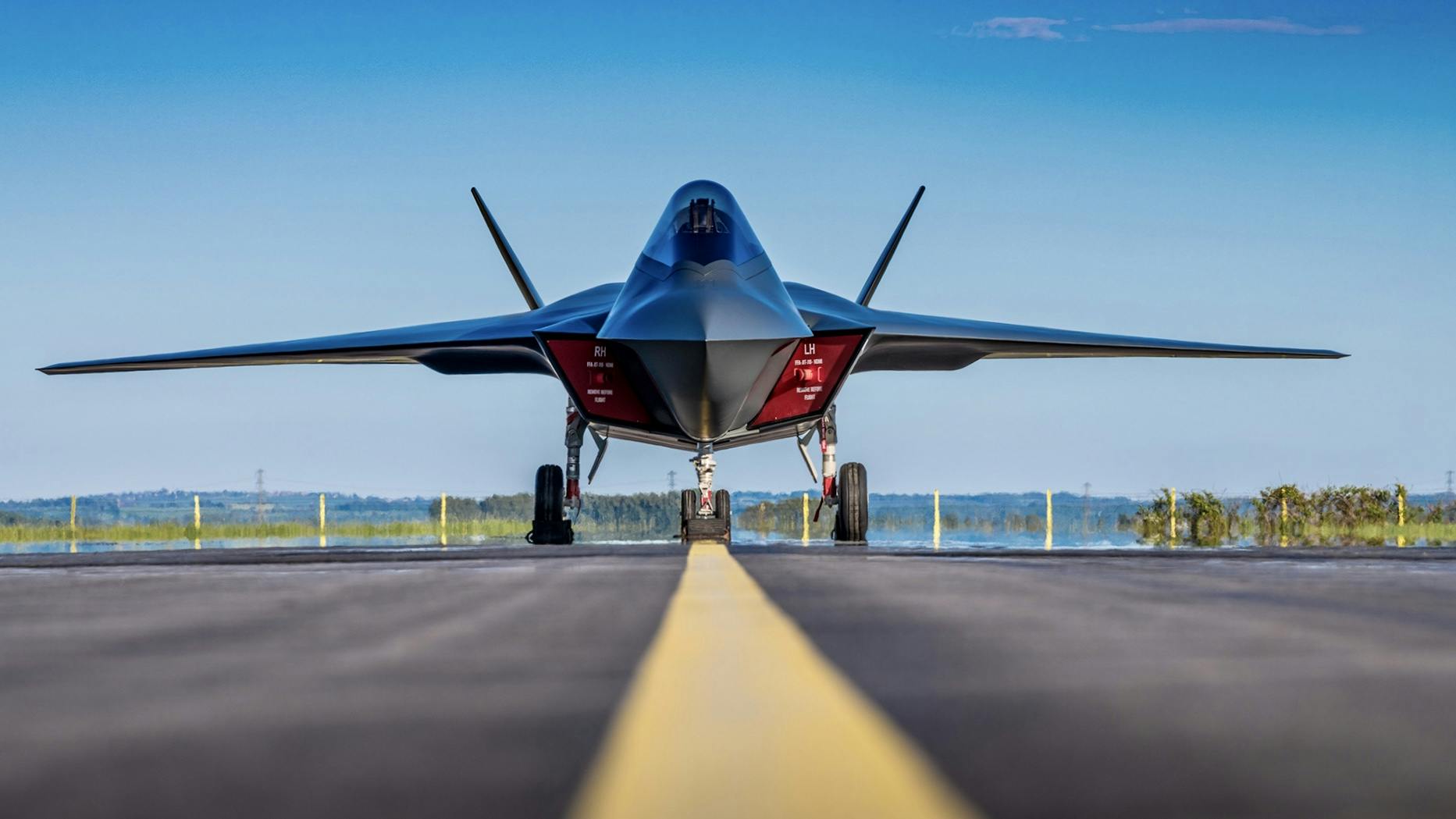
Challenger 2, the wrong tank for the British Army?
 ukdefencejournal.org.uk
ukdefencejournal.org.uk
Challenger 2, the wrong tank for the British Army?
By
Stuart Crawford
-
August 23, 2018
212
Share
The UK now fields only 227 main battle tanks, a far cry from the 900 or so strong inventory only a couple of decades ago.
This article was written by Stuart Crawford, a regular officer in the Royal Tank Regiment for twenty years, retiring in the rank of Lieutenant Colonel in 1999. During his military career he attended both the British and US staff colleges and undertook a Defence Fellowship at Glasgow University. He now works as a political, media, and defence and security consultant in Edinburgh and is a regular commentator on military and defence topics in the print and broadcast media.
The present British MBT, the Challenger 2, had its origins in the Chieftain Replacement programme of the 1980s, when I was a staff officer at the Headquarters of the Director of the Royal Armoured Corps (HQDRAC) at Bovington Camp in Dorset.
My personal previous experience of tanks had been primarily on the old Chieftain, a sluggish and unreliable vehicle but one for which we came to have a grudging affection. I led a troop and subsequently a squadron of Chieftains during my time with the 4th Royal Tank Regiment in the 1980s.
Image Crown Copyright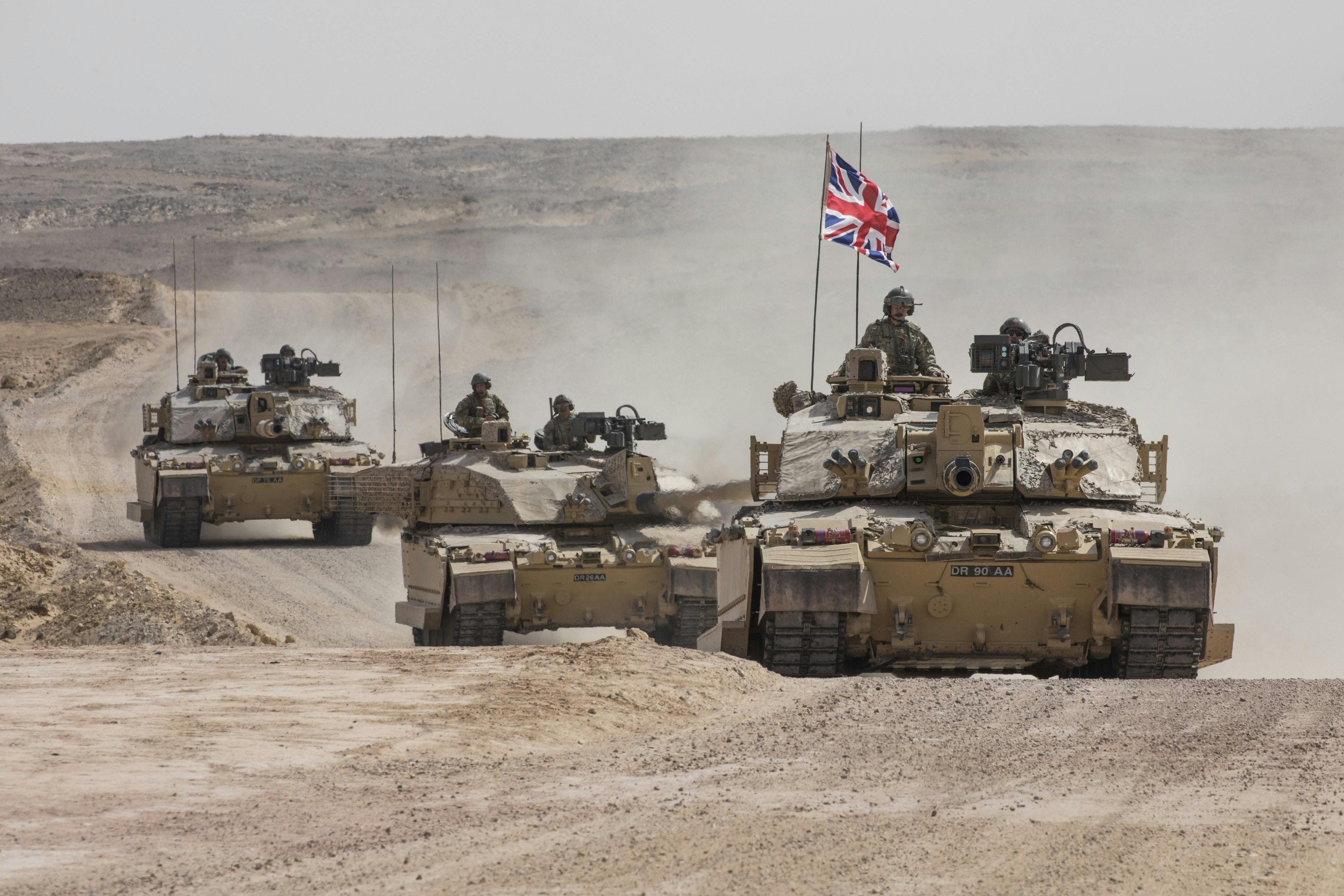
We used to say that Chieftain was the best tank in the world as long as it broke down in a good fire position, and there was a strong element of truth in that statement. Its armour protection was good, its 120mm rifled gun powerful and accurate, but its automotive systems let it down. And by the time I commanded my squadron it was obsolescent if not obsolete.
Meanwhile, Germany’s 105mm-armed Leopard 1 showed new levels of mobility and reliability, and the Soviet T-64 and T-72 models with their auto-loaded 125mm guns overmatched Chieftain. Brief respite for the Royal Armoured Corps came with a part-fleet MBT replacement in the shape of Challenger 1, essentially a cancelled export order model for Iran which fell through with the removal of the Shah in 1979, but it was clear then that Britain needed a new tank.
The first draft of the Chieftain Replacement operational requirements paper dropped on to our desks in early 1987. I was straight out of Staff College and armed with a year’s technical training gained at the Royal Military College of Science at Shrivenham, and was raring to go. Staffing the Chieftain Replacement paper became the major and most important aspect of my work over the next two years.
To go into all the technical requirements for the Chieftain Replacement would be boring in the extreme, and I dare say some of them are still classified. However the usual design parameters, including levels of armour protection, range, crew survivability, gun performance and communications fit amongst others, were set out clearly. And so I and my colleagues spent literally hundreds, if not thousands, of hours discussing and debating what the best option for Britain’s next tank might be.
We represented the end user, after all, and we wanted to get it right.
In the end there were three and a half main contenders for the contract in our eyes. The “half” contender was the French Leclerc MBT, the most modern western tank at the time, and attractive because it had an autoloader for its 120mm smoothbore gun and a three man crew. It could also fire the same ammunition as the Rheinmetall 120mm smoothbore of other NATO nations. However, at the time, and rightly or wrongly, it was deemed too much of a risk. There was also some totally fatuous opinion from elsewhere that a three man crew would make dismounted guard duties unduly onerous when in leaguer. Such was the level of debate at that stage.
This left three main contenders – Germany’s Leopard 2, the US M1A1 Abrams, and Vickers Defence Systems’ (now BAE Systems) Challenger 2. We lived and breathed the project, discussing every aspect in minute detail time and again. In the end the recommendation of the HQDRAC staff officers was clear; Britain’s next tank should ideally be the Leopard 2, mainly for reasons of reliability, impressive mobility, and because of its 120mm smoothbore gun, which would give Britain ammunition compatibility and interoperability with our NATO allies (many of whom opted for Leopard 2) and the perceived advantages of economy of scale of production.
Second choice was the M1A1 Abrams, which was attractive for many of the same reasons and mounted the smoothbore gun, but we had reservations over its gas turbine engine’s fuel requirements and the logistics implications of catering to that demand. Last came Challenger 2, because we didn’t rate its potential for reliability – given the poor record of Chieftain and Challenger 1 – and we thought it mounted the wrong rygun. There wasn’t anything fundamentally wrong with the Royal Ordinance Factory’s 120mm rifled gun (the CHARM gun) in terms of its overall performance, it was just that it was non-NATO ammunition compatible.
So Leopard 2 was our recommendation. And obviously we were ignored. We weren’t entirely oblivious to the furious lobbying that was going on in favour of Challenger 2 and recognised that the “strategic necessity” argument for Britain to maintain its own tank design and production expertise might win the day – even when both foreign contenders pledged to set up their production lines in the UK. A final plea that at the very least Challenger 2 should mount the 120mm smoothbore fell on deaf ears.
Obviously the Royal Armoured Corps ended up with Challenger 2, and in fairness if has proved to be not a bad MBT even although it has never been confronted by a peer or near-peer enemy. But with an out of service date of 2025 the same question faces the UK; what, in anything, should replace Challenger 2 as Britain’s next MBT? One of the options is updating Challenger 2 to allow it to soldier on until 2035, and experiments have been undertaken to, believe it or not, mount the 120mm smoothbore gun as part of that upgrade. The smoothbore has advantages including greater armour penetration than the British rifled gun and uses a tungsten penetrator that has none of the political and environmental baggage that comes with the British DU one.
It’s sometimes useful to gauge a weapon system’s general utility and effectiveness by having a look at its export sales. Word gets round if equipment is good and other countries tend to buy it. Leopard 2 has been bought by 18 countries with 4 more prospective purchasers. M1 Abrams has been bought by 7 countries with two more in the offing. Challenger 2 has been bought by two – the UK and Oman.
Maybe this time around the UK will be able to swallow its national pride and opt for the best option on offer no matter its country of provenance?
3.9
Article Rating
Share
Stuart Crawford
Stuart Crawford was a regular officer in the Royal Tank Regiment for twenty years, retiring in the rank of Lieutenant Colonel in 1999. Crawford attended both the British and US staff colleges and undertook a Defence Fellowship at Glasgow University. He now works as a political, defence and security consultant and is a regular commentator on military and defence topics in print, broadcast and online media.
Huhta
Greatest Leader
Ehkä siinä aluksi oli ajatus. Mutta pian mm. rihlattu tykki vs. Leon ja Abramsin sileä alkoi näyttää oudolta. Nykyisillä luvuilla erityisesti mietityttää mitä järkeä on puuhailla noin pieni määrä versiota tankista, jota ei kukaan voi enää ostaa. Olisi voinut ostaa jatkokelpoisen Leon.
Eli pidätteleekö edelleen se ajatus, että olisi joku projekti johon hypätä UK-työnjaon nimissä? Se on minusta höperöä noilla brittien tulevaisuuden tankkilauttojen koolla.
Mitä järkeä olisi ostaa Challenger 2:ta vanhempi Leopard 2, kun Leopard 2:n korvaaja on jo kehityksessä ja tulossa ulos ehkä 10 vuoden kuluttua? (No, kyllähän Suomikin pyysi F-16:sta tarjousta Hornetin korvaajaksi, vaikka se hävisi Hornetille jo 30 vuotta sitten...)
Brittien tulevaisuuden kuvioiden järkevyys on toki niin ja näin. Tosin eivät kai Saksa ja Ranska ole sitoutuneet ostamaan tuhansittain uuden yhteistyöprojektinsa hedelmää? Siihen nähden on briteiltä ihan loogista, ettei haluta luopua kaikesta omavaraisuudesta panssarivaunujen suhteen. Jos haluaa pysyä kehityksen aallonharjalla, on pakko kehittää jotakin.

